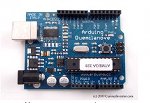 How-To Guides
How-To Guides
|
|
|
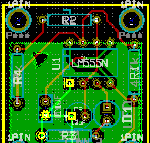 |
Tutorials for KiCad – A Free Open Source Schematic and PCB Layout Editor
This set of tutorials will cover some essentials to designing circuits and pcb layouts using kicad, an open-source tool for circuit (board) design that’s free and has no restrictions on number of layers or size (like Eagle). We’ll focus more on the unintuitive things as well as tips & tricks rather than re-write the manual. |
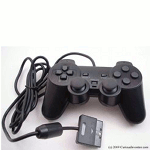 |
Play Station 2 (PS2) Controller Communication Protocol
The goal of this guide is to consollidate and test many of the numerous PS2 interfacing guides already out there. Included are the hardware connection requirements, software protocol (including pressure vibration motors, pressure sensitivity and guitar hero controller), and complete hand-shake traces showing everything a real play station and controller say to each other on first connect. Also includes c source code (MPLAB projects) for the PIC18F4550.
|
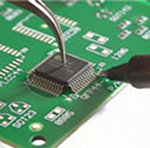 |
Surface Mount Soldering
A set of tutorials (including video) showing inexpensive ways to solder a variety of surface mount components, including: fine-pitch QFPs, lead-less QFNs, PLCCs, Resistors, and more. It also includes a listing of inexpensive tools with pictures, and a tutorial on using solder paste with a toaster oven. |
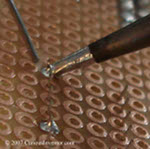 |
How To Solder
This guide contains a 7 min. overview video followed by in depth discussion of picking out the right tools (how much wattage & temperature is needed? what type of solder? flux?), proper technique, and loads of hi-res, close up shots of good and bad joints.
|
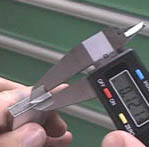 |
Metal Working
An 8-min. video introduction to working with metal. It explains how to tap holes (embed screw threads in metal), accurately measure and locate holes, and use a variety of tools including calipers, center punches, squares, files, deburring tools, and more. |
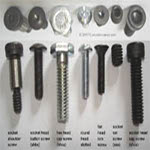 |
Ever wanted to know just how big a screw you need for a given application? Or what the different types are and when to use them? (coarse thread, fine thread, machine, wood, socket, lag, etc). How tight should it be? And what are washers for and when are they needed? |
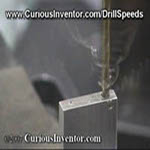 |
How fast should you set your drill press for a certain size drill bit and material? |
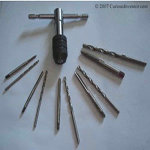 |
What size drill do you need for a given tap size? What size clearance drill? |
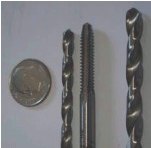 |
Drill Letter and Number Decimal Cross Reference Just how big is a letter F or number 4 drill. Sizes in English and metric decimals. |
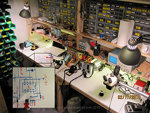 |
Inspired by the desks at atlanta’s hackerspace, we made a new work station with a white board as a surface |
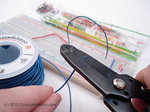 |
If breadboard jumper kits seem too expensive, you can easily make your own with 22 AWG solid core wire. |
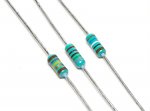 |
E Series: Why resistors come only in certain values? Why is it easy to find 4.7k resistors, but not 4.8k resistors? Where do common values like 1.2k, 2.7k, 560, and 820 come from and who decides them? |
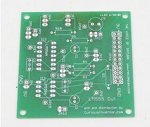 |
Techniques for finding shorts in PCBs After ordering a new pcb and populating all the components, sometimes you’ll find a short between two signals. This can be especially hard to track down if it’s touching a ground or power signal that travels all over the board. Worse yet, sometimes the short is on an internal layer and can’t be seen. |
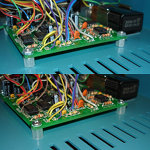 |
A cheap substitute for aluminum standoffs: nylon tubing |
 |
Detailed building and programming instructions for the Arduinome. |
 |
Controlling 4 or more servos with an Arduino The newest version of arduino has a SoftwareServo library built in, which lets you use more than two servos at once. |
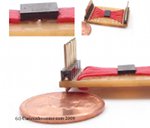 |
Amazing tack-soldering on the bottom of a No-Lead chip to make a simple break-out board without any special PCBs. |
 |
PCB as a Heat Sink + Calculating Trace Width for Given Current Guide into into heat and temperature issues surrounding circuit layout design, including the effectiveness of the PCB itself as a heat sink when a voltage regulator’s heat sink is soldered directly to the board, and how to size trace widths for given current loads. |
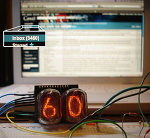 |
Nixie Tube Gmail Unread Mail Count / Notifier How to make a nixie display that shows the last two digits of your gmail unread count. It uses a python script to check your gmail atom feed. |
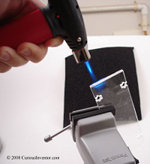 |
Clearing Cloudy Acrylic Edges with Fire Scroll or hack sawing through acrylic can leave a cloudy edge, but a few passes from a butane torch will quickly clear it up. |
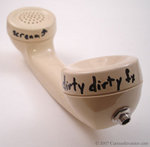 |
HowTo: Make a LoFi Mic from an Old Telephone The speaker in an old telephone makes a great lo-fi mic. Just wire a 1/4 inch jack straight up to the speaker and enlarge the telephone jack hole to mount it. |
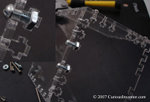 |
How To: Make Cheap LaserCut Custom Boxes for Your DIY Electronics Dremeling out holes for knobs, switches and displays is fun, but several companies now offer cheap laser cutting that lets you make a custom acrylic box with all the right holes and dimensions for under $30. |
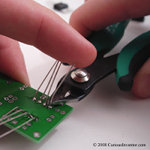 |
Keep Clipped Leads from Flying This is a small but useful tip we got from talking to David at uCHobby about lead trimming |
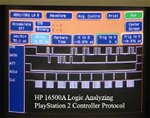 |
A logic analyzer is the most common piece of equipment in a hobbyist’s shop, so we thought would write a small introduction about what it is and what it’s good for. |
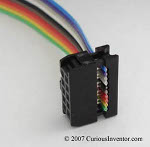 |
Attach IDC Sockets to ribbon cable Although special crimpers exist for this purpose, a small bench top clamp works great for pressing the together the top and bottom of IDC sockets on ribbon cable. |
 |
Poor man’s surface mount prototyping Don’t want to send out for a PCB when you just have a couple surface mount parts that need prototyping? Make your own surface mount PCB. |
